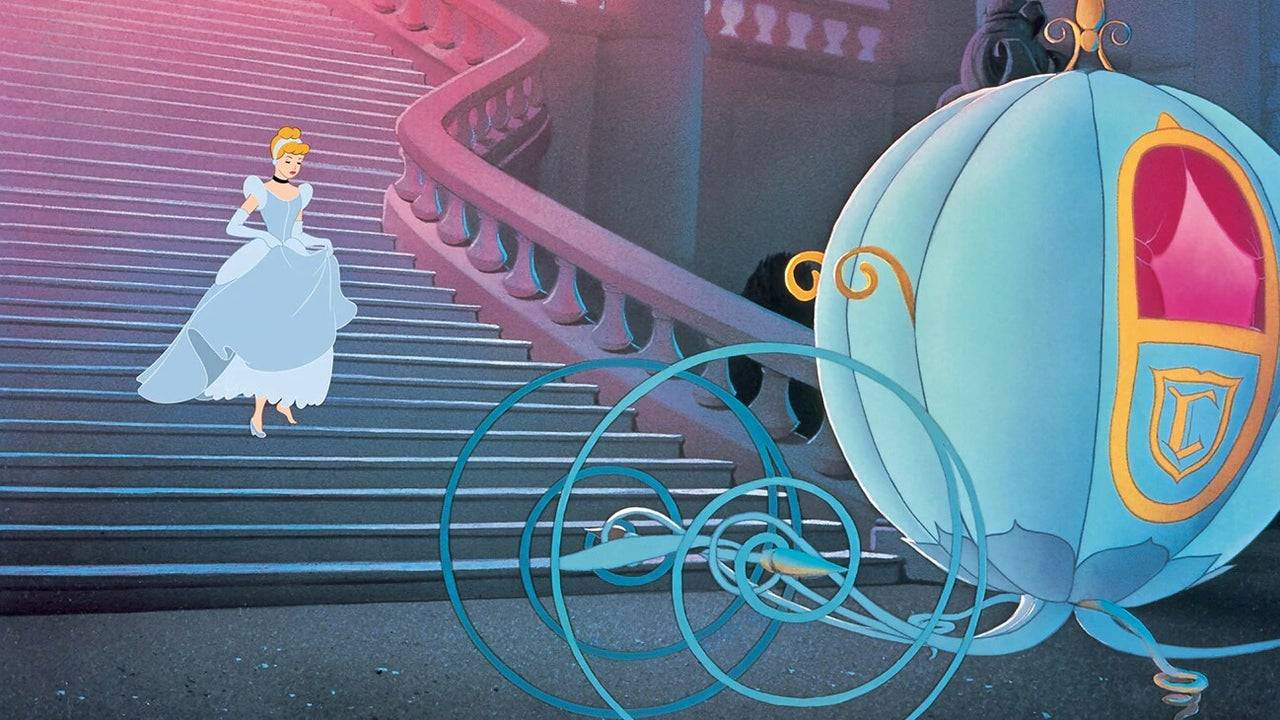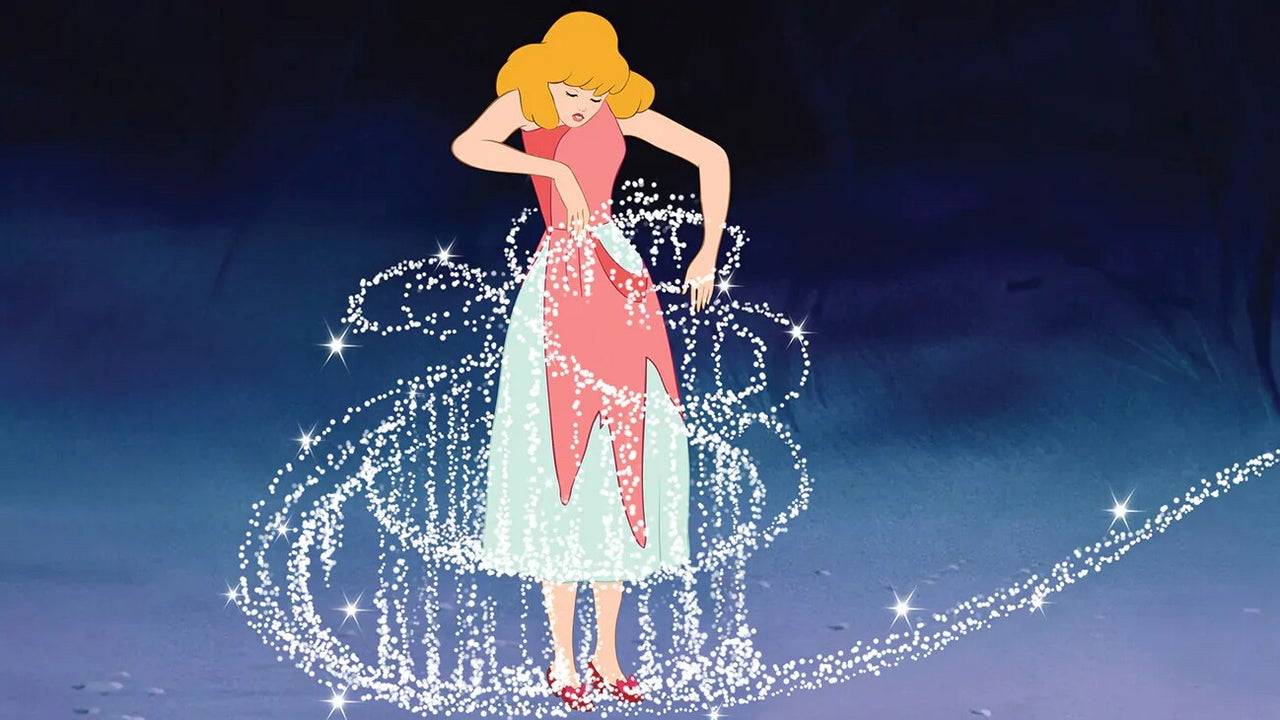Just as Cinderella's fairy tale ended at midnight, The Walt Disney Company faced its own midnight moment in 1947, grappling with a debt of approximately $4 million following the financial setbacks of Pinocchio, Fantasia, and Bambi, exacerbated by World War II and other challenges. However, the enchanting story of Cinderella and her iconic glass slippers became the savior that prevented Disney from concluding its animation journey prematurely.
As Cinderella celebrates its 75th anniversary of its wide release on this day, March 4, we've had the privilege of speaking with several Disney insiders who continue to draw inspiration from this timeless rags-to-riches narrative. This story not only parallels Walt Disney's own journey but also rekindled hope within the company and across a world in the process of rebuilding and seeking inspiration.
The Right Film at the Right Time --------------------------------To understand the context, let's revisit Disney's pivotal moment in 1937 with Snow White and the Seven Dwarfs. The film's unprecedented success, holding the title of the highest-grossing film until Gone with the Wind surpassed it two years later, enabled Disney to establish its Burbank studio, which remains its headquarters today, and paved the way for more ambitious animated feature films.
Following Snow White, Disney released Pinocchio in 1940, which, despite its $2.6 million budget—a million more than Snow White—and critical acclaim, including Academy Awards for Best Original Score and Best Original Song, ended up losing around $1 million. This pattern continued with Fantasia and Bambi, further deepening the studio's financial woes. The root of these challenges was largely tied to the outbreak of World War II, triggered by Germany's invasion of Poland in September 1939.
"Disney's European markets vanished during the war, and films like Pinocchio and Bambi couldn't be shown there," explained Eric Goldberg, co-director of Pocahontas and lead animator on Aladdin's Genie. "The studio then shifted to producing training and propaganda films for the U.S. military, and later in the 1940s, they released 'Package Films' such as Make Mine Music, Fun and Fancy Free, and Melody Time. While these were quality productions, they lacked a cohesive narrative from start to finish."

Package Films were essentially compilations of short cartoons assembled into feature-length films. Disney produced six of these between the releases of Bambi in 1942 and Cinderella in 1950, including Saludos Amigos and The Three Caballeros, which were part of the U.S.'s Good Neighbor Policy aimed at countering Nazi influence in South America. Although these films managed to recoup their costs and even reduced the studio's debt from $4.2 million to $3 million by 1947, they hindered the studio's ability to produce full-length animated narratives.
"I wanted to get back into the feature field," Walt Disney expressed in 1956, as documented in The Animated Man: A Life of Walt Disney by Michael Barrier. "But it required significant investment and time. Producing a quality animated feature demands both. My brother Roy and I had a heated discussion... It was a major upset for me... I insisted we either move forward, return to feature filmmaking, or liquidate and sell out."
Facing the prospect of selling his shares and retiring, Walt, alongside his brother Roy, opted for the riskier route, betting everything on what would be the studio's first major animated feature since Bambi. Failure could have spelled the end for Disney's animation studio.
"I think the world needed the idea that we can rise from the ashes and experience something beautiful," said Tori Cranner, Art Collections Manager at Walt Disney Animation Research Library. "While Pinocchio is a masterpiece, it lacks the joy that Cinderella brings. Walt recognized that post-war America needed hope and joy, and Cinderella was the perfect story for that moment."
Cinderella and Disney’s Rags to Riches Tale
Walt's connection to Cinderella dates back to 1922 when he produced a Cinderella short at Laugh-O-Gram Studios, his venture before founding Disney with Roy. This short, inspired by Charles Perrault’s 1697 version of the tale, which traces its origins to between 7 BC and AD 23, was a classic narrative of good versus evil, true love, and the realization of dreams—a theme that deeply resonated with Walt.

"Snow White was a kind and simple little girl who believed in wishing and waiting for her Prince Charming," Walt Disney remarked, as seen in the special DVD feature Disney’s Cinderella: The Making of a Masterpiece. "Cinderella, however, was more pragmatic. She believed in dreams but also took action to make them happen. When Prince Charming didn't come to her, she went to the palace to find him."
Cinderella's strength and determination, despite her mistreatment by her Evil Stepmother and Stepsisters, mirrored Walt's own journey from humble beginnings, marked by numerous failures yet fueled by an unwavering dream and relentless work ethic.
Walt's passion for the story persisted, and in 1933, he attempted to revive it as a Silly Symphony short. However, the project's scope expanded, leading to a decision in 1938 to develop it into a feature film. It took over a decade to bring Cinderella to the screen, delayed by the war and other factors, but this time allowed the film to evolve into the beloved classic we cherish today.
Disney's success with Cinderella can be attributed to its ability to transform these timeless tales into stories with universal appeal. "Disney had a knack for reimagining these age-old fairytales," Goldberg noted. "He infused them with his unique taste, entertainment sense, and passion, making the characters and stories more compelling than the originals. These tales, often dark and cautionary, were made universally enjoyable and timeless by Disney."
Cinderella's animal friends, including Jaq, Gus, and the birds, added humor and warmth, serving as her confidants and helping to reveal her true character. The Fairy Godmother, reimagined as a more relatable, bumbling grandmother figure by animator Milt Kahl, connected with audiences in a way that a more regal fairy might not have.
The iconic transformation scene, where Cinderella's dress magically evolves, is often cited as Walt's favorite. The meticulous hand-drawn and hand-painted sparkles, crafted by Disney Legends Marc Davis and George Rowley, capture a moment of magic that holds audiences' breath.
Thanks so much for all your questions about Cinderella! Before we sign off, enjoy this pencil test footage of original animation drawings of the transformation scene, animated by Marc Davis and George Rowley. Thanks for joining us! #AskDisneyAnimation pic.twitter.com/2LquCBHX6F
— Disney Animation (@DisneyAnimation) February 15, 2020
"Each sparkle was hand-drawn and painted," Cranner shared with enthusiasm. "There's a moment during the transformation where the magic pauses for just a second before her dress changes, and that's what makes the scene truly magical—a brief moment of suspense before the magic unfolds."
Another Disney innovation was the breaking of one glass slipper, a detail not present in earlier versions, which underscored Cinderella's agency and strength. "Cinderella isn't just a passive character; she's strong and resourceful," Goldberg emphasized. "When the slipper breaks, she reveals she's been holding onto the other one, showcasing her control over her destiny."
Cinderella's premiere in Boston on February 15, 1950, followed by its wide release on March 4, marked a triumphant return for Disney. Earning $7 million on a $2.2 million budget, it became the sixth-highest grossing film of 1950 and received three Academy Award nominations.
"When Cinderella was released, critics hailed it as a return to form for Walt Disney," Goldberg recalled. "It was a massive success because it brought back the narrative feature films like Snow White, and the studio regained its confidence. Following Cinderella, Disney went on to create classics like Peter Pan, Lady and the Tramp, Sleeping Beauty, 101 Dalmatians, and The Jungle Book, all thanks to Cinderella's success."
75 Years Later, Cinderella’s Magic Lives On
Seventy-five years on, Cinderella's legacy continues to enchant and inspire. Her castle stands as a symbol at Walt Disney World and Tokyo Disneyland, and her influence is evident in Disney's modern classics, including a pivotal scene in Frozen.
"When animating Elsa's dress transformation in Frozen, we drew direct inspiration from Cinderella," said Becky Bresee, lead animator on Frozen 2 and Wish. "The sparkles and effects around Elsa's dress are a nod to Cinderella's magic, honoring the impact of the films that came before."

Cinderella's enduring legacy is also a testament to the work of the Nine Old Men and Mary Blair, whose contributions gave the film its unique charm and style. As Eric Goldberg aptly summarized, "The essence of Cinderella is hope. It teaches us that perseverance and strength can lead to the realization of dreams, no matter the era."






![NULL [Remastered]](https://imgs.39man.com/uploads/71/1719651062667fcaf6c483b.png)








